
NGC 4881 is an elliptical galaxy in the northern constellation of Coma Berenices. It was discovered by the German astronomer Heinrich Louis d'Arrest on April 22, 1865. John L. E. Dreyer described it as "faint, small, a little extended, 9th magnitude star to southwest". This object is located at a distance of approximately 309 megalight-years from the Milky Way. It is a member of the Coma cluster of galaxies, positioned around 18′ to the north of the cluster's center with no nearby galactic neighbors.

NGC 3632 and NGC 3626 is an unbarred lenticular galaxy and Caldwell object in the constellation Leo. It was discovered by William Herschel, on 14 March 1784. It shines at magnitude +10.6/+10.9. Its celestial coordinates are RA 11h 20.1m, dec +18° 21′. It is located near the naked-eye-class A4 star Zosma, as well as galaxies NGC 3608, NGC 3607, NGC 3659, NGC 3686, NGC 3684, NGC 3691, NGC 3681, and NGC 3655. Its dimensions are 2′.7 × 1′.9. The galaxy belongs to the NGC 3607 group some 70 million light-years distant, itself one of the many Leo II groups.

NGC 27 is a spiral galaxy located in the constellation Andromeda. It was discovered on 3 August 1884 by Lewis Swift. It forms a galaxy pair with the nearby UGC 95.

NGC 3539 is a lenticular galaxy in the constellation Ursa Major. It was discovered in April 1831 by John Herschel. It is a member of the galaxy cluster Abell 1185.
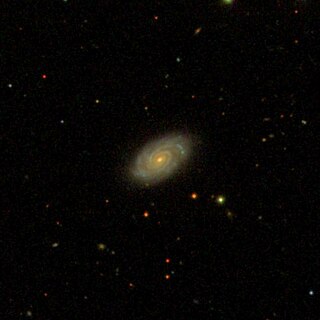
NGC 41 is a spiral galaxy located in the constellation Pegasus. It is located about 290 million light-years away from the Sun. It was discovered on October 30, 1864, by the astronomer Albert Marth.

NGC 5970 is a large barred-spiral galaxy located about 90 million light years away in the constellation Serpens Caput. It appears to have two satellite or companion galaxies. It is a member of the Virgo Cluster of galaxies. It was discovered on March 15, 1784, by the astronomer William Herschel.

NGC 1560, also known as IC 2062, is an 11th-magnitude spiral galaxy, in the IC 342/Maffei Group. It was discovered by Wilhelm Tempel on August 1, 1883.

NGC 4866 is an unbarred lenticular galaxy located roughly 100 million light-years away in the constellation Virgo. It was first observed by British astronomer Sir William Herschel on January 14, 1787. It is a member of the Virgo Cluster.

NGC 63 is a spiral galaxy in the constellation Pisces. NGC 63 is its New General Catalogue designation. It has an apparent V-band magnitude of 12.70.
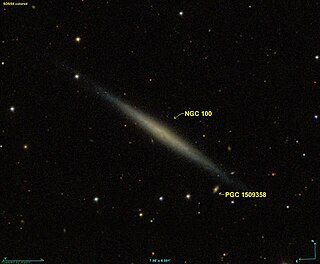
NGC 100 is a galaxy located approximately 60 million light-years from the Solar System in the constellation Pisces. It has an apparent magnitude of 13.2. It was first discovered on 10 November 1885 by American astronomer Lewis Swift.
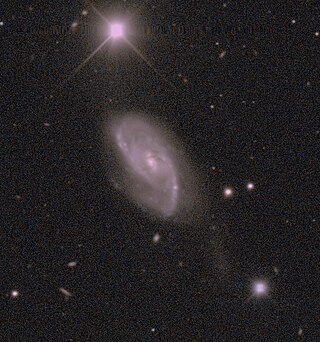
NGC 66 is a barred spiral galaxy discovered by Frank Muller in 1886, and is located in the Cetus constellation.
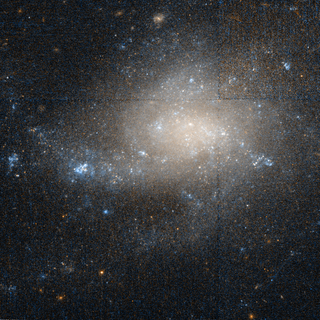
NGC 4534 is a spiral galaxy, located in the Canes Venatici constellation. It was discovered on May 1, 1785, by William Herschel, using an 18" reflector telescope.

NGC 112 is a barred spiral galaxy located in the constellation Andromeda. It was discovered by American astronomer Lewis Swift on September 17, 1885. The galaxy lies approximately 295 million light-years from Earth, and is about 75,000 light-years in diameter.

NGC 120 is a lenticular galaxy of type SB0? pec? with an apparent magnitude of 13.4 located in the constellation Cetus. It was discovered on 27 September 1880 by Wilhelm Tempel.
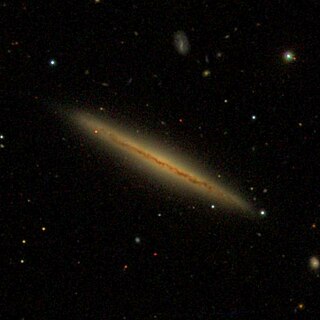
NGC 5470 is an edge-on spiral galaxy located between 43 and 68 million light-years away in the constellation Virgo. It was discovered by astronomer John Herschel in 1830. It is a member of the Virgo III Groups, a series of galaxies and galaxy clusters strung out to the east of the Virgo Supercluster of galaxies.

NGC 3001 is a magnitude 11.83 spiral galaxy in the constellation Antlia, discovered on 30 March 1835 by John Herschel. It has a recessional velocity of 2,465 kilometres (1,532 mi) per second, and is located around 115 million light years away. NGC 3001 has an apparent size of 4.3 by 3.1 arcminutes and is about 145 thousand light years across.

NGC 543 is an elliptical galaxy located around 324 million light-years away in the constellation Cetus. NGC 543 was discovered on October 31st, 1864 by Heinrich Louis d'Arrest. It is not known to have much star formation, and it is a member of the galaxy cluster Abell 194.

NGC 3156 is a lenticular galaxy located in the constellation Sextans. It is located at a distance of about 75 million light-years from Earth and is forming a pair with NGC 3169. It was discovered by astronomer William Herschel on December 13, 1784.

NGC 5582 is an elliptical galaxy in the constellation Boötes. It was discovered by William Herschel on April 29, 1788.
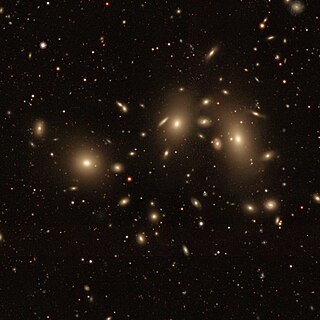
NGC 7503 is an elliptical galaxy in the constellation Pisces. It was discovered by the astronomer Albert Marth on September 2, 1864. It is the brightest galaxy in its cluster.




















